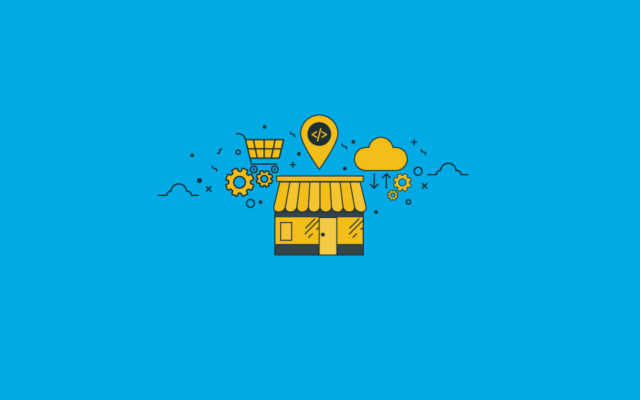In a three-part series our retail and customer experience expert Jonathan Hilton discusses the ‘future of retail’. He offers insight into the current challenges retailers face, along with proven advice on how retailers can future-proof their business.
In part 2 Jonathan discusses:
- What it means to be an omnichannel retailer
- ‘Bricks and clicks’ – a growing trend
- Who is successfully joining up the customer journey
- Some tips on how to approach omnichannel retailing
Missed part 1?
In part 1: Retail Reinvented, Jonathan talks about changing consumer behaviour, the impact of digital ‘pure-play’ businesses and where the biggest opportunities for retailers lay.
Sophie: Hi Jonathan. Can you introduce yourself and what you do at Digital Works Group?
Jonathan: I’m a partner within the Strategy, leadership and Innovation practice, with a focus on retail and telco. I help businesses look at their customer experience and the digitisation of customer experience in these industries. Helping them adapt and develop this vital part of the business.
I have over 20 years’ experience, both on agency and client-side. Most recently, leaving Vodafone as The Head of Retail, where I created the final strategy and vision for the Vodafone board.
Sophie: In your experience do retailers still tend to think in distinct ‘channels’?
Jonathan: Omnichannel as a term has evolved over the last 10 years. Over the years we’ve heard terms like ‘cross-channel’ or ‘multi-channel’ which are subtly different. The real retail transformation started to accelerate as the omnichannel term took hold.
The point is that the phenomena isn’t difficult to understand, but it’s difficult to execute. The reason it’s difficult to execute is you’re not just changing the technology. You are changing the way the business thinks about its customer base and operating model.
True omnichannel retailing is when a business operates organisationally from a single enterprise setup. This enables customers, colleagues and business functions to start and finish tasks in any touchpoint of their choosing.
This transforms the end-to-end operating model and puts the customer at the heart of the operation. Every aspect of the business – from commissions, customer engagement, marketing, finance, training, ways of working and how to track business performance – changes.
Sophie: There is a growing movement of ecommerce businesses dabbling in bricks and mortar. Why is this?
Jonathan: Made.com is a great example of a business which has built its physical retailing infrastructure and operations on its online platforms.
I’m a firm believer that that is the right way to go.
As a customer, if I’m online, and I’m going through the purchase process, I would expect that to be the same experience that I would have in store. Why does it need to be different? Why does it need to have separate systems – which cost so much money to maintain? I believe online is what runs your store.
Even five years ago platforms were very much siloed. For example, the stock would be reserved and ring-fenced for either online or physical stores.
Customers want transparency to enable them to have trust and confidence that at the point of purchase they’ve got the right price for them, and it wouldn’t matter if they went into another channel.
Customers just deal with ‘the brand’ irrespective of whether it is an online, physical retail view, or the brand’s call centre.
Sophie: Which brands are shining of examples of omnichannel?
Jonathan: Beauty manufacturer Sephora is a great example of omnichannel retailing. Online you can literally project your image and then layer makeup on top, so you’re able to see what the makeup would look like on you.
In store, you can also go and book an appointment and do the exact same thing through a consultation with a real person. They bring online and offline together to help the customer choose exactly what they need in terms of product.
Another great illustration of enhanced customer service is Disney. They are using highly personalised products such as their MagicBands to ensure their brand mantra of creating ‘magical experiences’ and dedication to the little details are preserved. The MagicBand is sent to you once you have booked your holiday. It is designed as a device to be on you all the times, enabling the wearer to do a multitude of things. From booking restaurants, acting as a room key, enter the theme parks and even acting as an optional payment method.
It’s about trying to fix the pain-points across the customer experience and applying technology to alleviate that in a way which is enjoyable.
In the travel world, Carnival is offering amazing customer experience – you don’t even need to book your own taxi – everything is sorted from the device that they give you.
From going from the taxi to the ship, from the ship into your room. You can manage it all yourself through this device. You can order drinks, and they will come and deliver wherever you are.
These retailers are taking convenience to another level. This is where we’re going to start to see a lot of exciting development.
Apps, beacon and NFC technologies are also going to allow the store to come alive through the mobile digital channels that you’re carrying on you.
Sophie: What can more traditional retailers learn from these retailers??
Jonathan: Let’s take a retailer such Lush. If you go into the store they are very clear on their segment and target audience they’re focusing on. That audience loves them.
What they’ve done in terms of visual merchandising in their stores is very clever; they are bringing to life natural products, and delivering them in a really intuitive creative way.
Lush are totally focussed on brand and what they represent from an ethical perspective. In fact, they have just taken the bold step of closing down their social media. Lush is a great example of how traditional retailing isn’t dead, it just needs to be done well.
Sophie: What advice you would give for retailers to become truly omnichannel?
Jonathan: Retailers need to start thinking about what the channels do to strengthen the customer experience and enable a much more efficient operation.
Evolving the organisation to deliver that is where the real challenge lays;
- How do you digitise the workforce and train them in the right way?
- How do you set up a commission structure that works? For example when a product is discovered online, but collected in store?
- How does it work if you’ve got a physical flagship store to ensure customers are being treated in the same way as a store which is 10 meters squared – from a sales and service KPI perspective?
These decisions have to be made upfront in order for the business to understand how it operates.
I believe omnichannel transformation is not only the digitisation of the business, but it’s a brand new operating model which requires new types of thinking, ways of working, and on the whole, a different mind-set from the employees.
In our third and final interview, Jonathan will be discussing how retail can fight back!
Article by channel:
Everything you need to know about Digital Transformation
The best articles, news and events direct to your inbox
Read more articles tagged: Featured, Omnichannel, Retail







